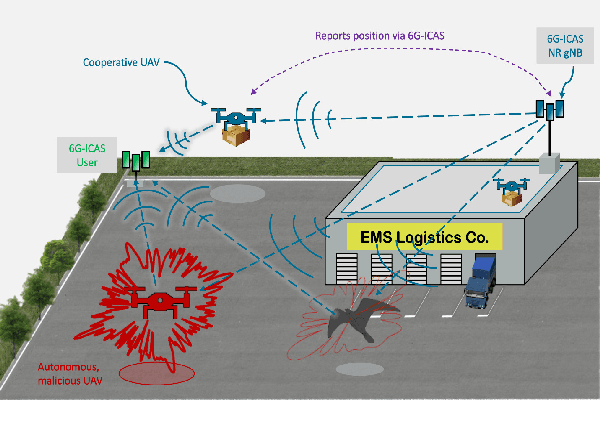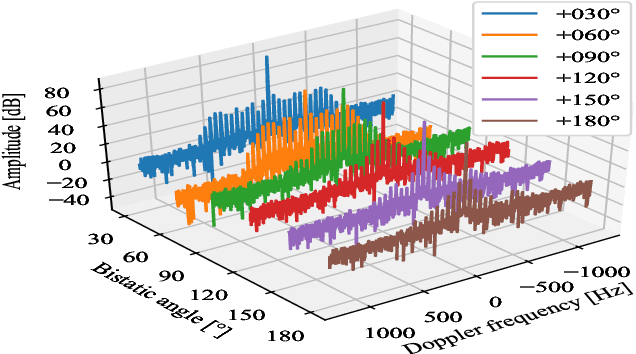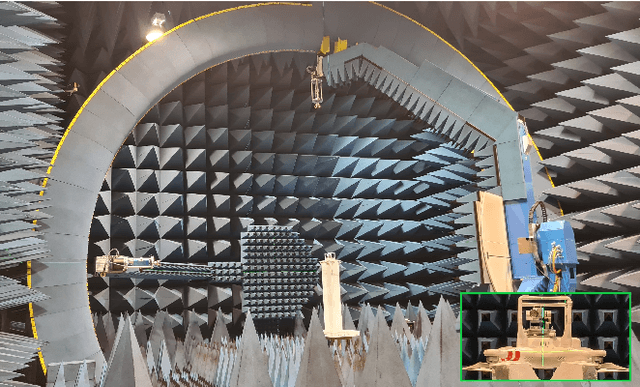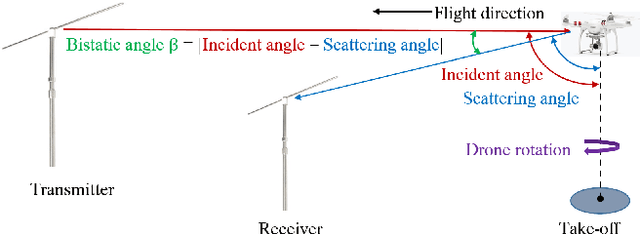Saw James Myint
Distributed Multisensor ISAC
Nov 17, 2025Abstract:Integrated Sensing and Communications (ISAC) will become a service in future mobile communication networks. It enables the detection and recognition of passive objects and environments using radar-like sensing. The ultimate advantage is the reuse of the mobile network and radio access resources for scene illumination, sensing, data transportation, computation, and fusion. It enables building a distributed, ubiquitous sensing network that can be adapted for a variety of radio sensing tasks and services. In this article, we develop the principles of multi-sensor ISAC (MS-ISAC). MS-ISAC corresponds to multi-user MIMO communication, which in radar terminology is known as distributed MIMO radar. \ First, we develop basic architectural principles for MS-ISAC and link them to example use cases. We then propose a generic MS-ISAC architecture. After a brief reference to multipath propagation and multistatic target reflectivity issues, we outline multilink access, coordination, precoding and link adaptation schemes for MS-ISAC. Moreover, we review model-based estimation and tracking of delay~/~Doppler from sparse OFDMA~/~TDMA frames. We emphasize Cooperative Passive Coherent Location (CPCL) for bistatic correlation and synchronization. Finally, issues of multisensor node synchronization and distributed data fusion are addressed.
Bistatic Micro-Doppler Analysis of a Vertical Takeoff and Landing (VTOL) Drone in ICAS Framework
Feb 12, 2025Abstract:Integrated Communication and Sensing (ICAS) is a key technology that enables sensing functionalities within the next-generation mobile communication (6G). Joint design and optimization of both functionalities could allow coexistence, therefore it advances toward joint signal processing and using the same hardware platform and common spectrum. Contributing to ICAS sensing, this paper presents the measurement and analysis of the micro-Doppler signature of Vertical Takeoff and Landing (VTOL) drones. Measurement is performed with an OFDM-like communication signal and bistatic constellation, which is a typical case in ICAS scenarios. This work shows that micro-Doppler signatures can be used to precisely distinguish flight modes, such as take-off, landing, hovering, transition, and cruising.
Sounding-Based Evaluation of Multi-Sensor ISAC Networks for Drone Applications: Measurement and Simulation Perspectives
Feb 26, 2024



Abstract:With the upcoming multitude of commercial and public applications envisioned in the mobile 6G radio landscape using unmanned aerial vehicles (UAVs), integrated sensing and communication (ISAC) plays a key role to enable the detection and localization of passive objects with radar sensing, while optimizing the utilization of scarce resources. To explore the potential of future ISAC architectures with UAVs as mobile nodes in distributed multi-sensor networks, the system's fundamental capability to detect static and dynamic objects that reveal themselves by their bi-static back-scattering needs to be evaluated. Therefore, this paper addresses simulation- and measurement based data acquisition methods to gather knowledge about the bistatic reflectivity of single objects including their Micro-Doppler signature for object identification as well as the influence of multipath propagation in different environments on the localization accuracy and radar tracking performance. We show exemplary results from simulation models, bi-static reflectivity measurements in laboratory environment and real-flight channel sounding experiments in selected scenarios showcasing the potential of synthetic and measured data sets for development and evaluation of ISAC algorithms. The presented measurement data sets are publicly available to encourage the academic RF community to validate future algorithms using realistic scenarios alongside simulations models.
Static Reflectivity and Micro-Doppler Signature of Drones for Distributed ICAS
Jan 25, 2024



Abstract:The integration of wireless communication and radar sensing is now getting a huge interest from researchers of two big societies, wireless communication and radar. The road map to the final goal and individual solutions to the challenges might differ in developing the Integrated Communication and Sensing (ICAS) system. However, the electromagnetic signature of the targets will be still valid for all variants of the ICAS system because the detection, localization and classification of the targets are involved. Therefore, this paper presents a study on static reflectivity and micro-Doppler signatures of drones together. To acquire the required data, the state-of-the-art measurement system, BiRa, is used.
Modelling Micro-Doppler Signature of Drone Propellers in Distributed ISAC
Jan 25, 2024



Abstract:Integrated Sensing and Communication (ISAC) comprises detection and analysis of non-cooperative targets by exploiting the resources of the mobile radio system. In this context, micro-Doppler is of great importance for target classification, in order to distinguish objects with local movements. For developing algorithms for target classification, it is necessary to have a large amount of target signatures. Aiming to generate these data, this paper proposes a mathematical model for the micro-Doppler of drone rotating propellers, and validate the proposed model by comparing it to measured micro-Doppler. Results show that the proposed mathematical model can generate micro-Doppler data very similar to those from measurement data.
 Add to Chrome
Add to Chrome Add to Firefox
Add to Firefox Add to Edge
Add to Edge